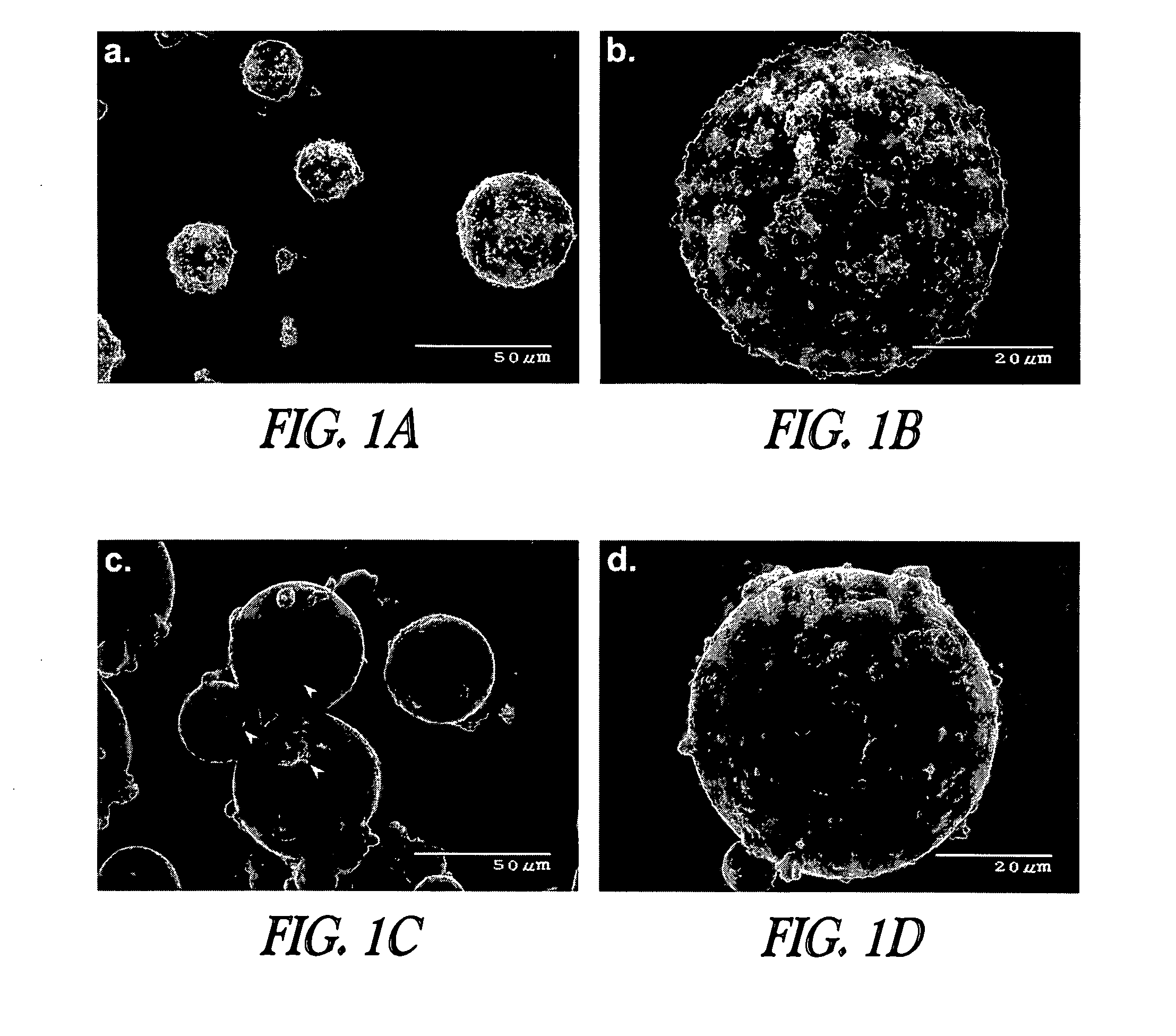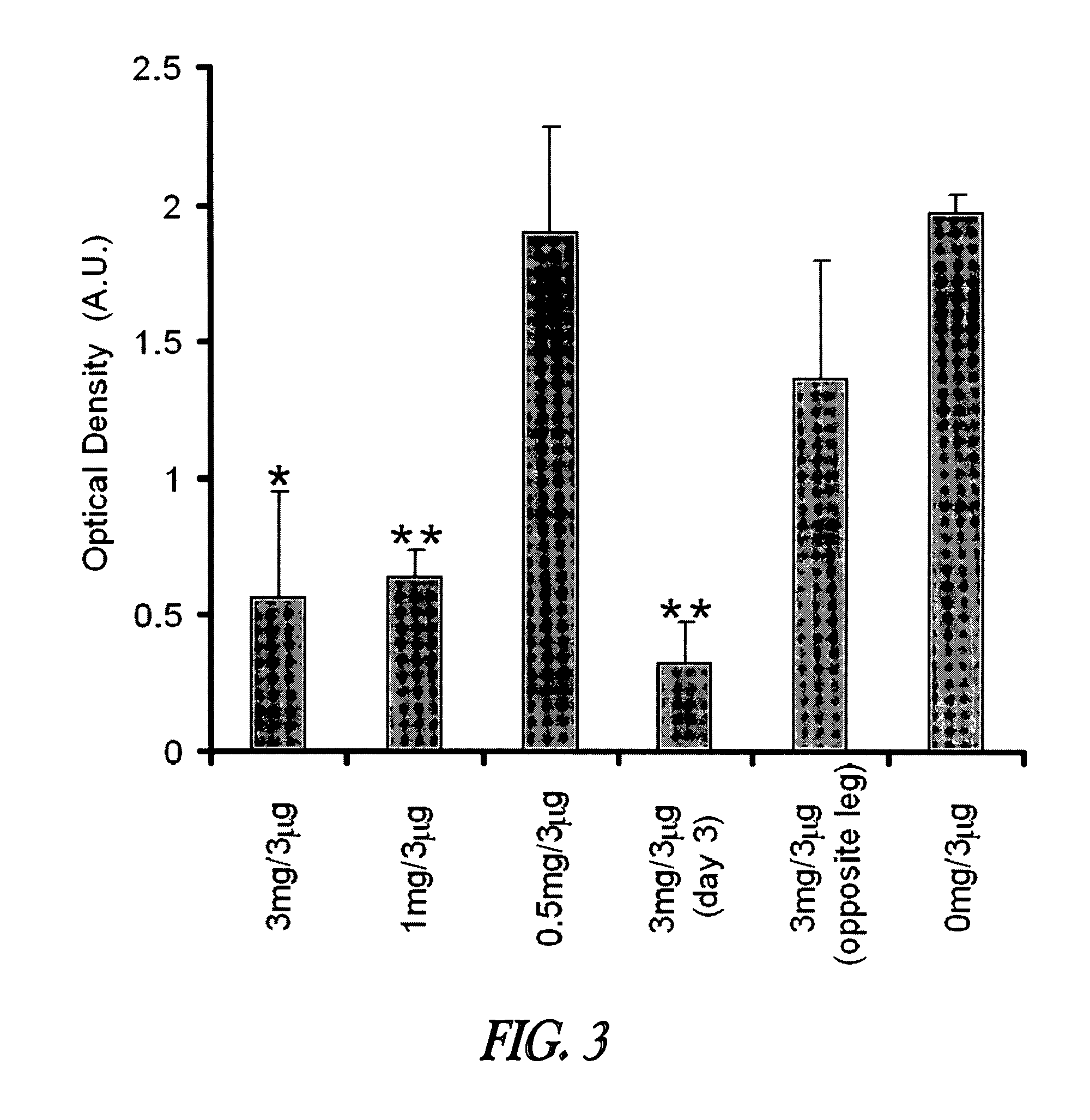Controlled-release immunogenic formulations to modulate immune response
a technology of immunogenic formulations and immunogenic formulations, which is applied in the direction of snake antigen ingredients, antibody medical ingredients, biocide, etc., can solve the problems of complex mechanisms governing the type of immune response, complex clinical and engineering challenges, and threat to public health for diseases for which effective vaccines exist, etc., to preserve the immunogenicity of tt, enhance the immune response, and high avidity
- Summary
- Abstract
- Description
- Claims
- Application Information
AI Technical Summary
Benefits of technology
Problems solved by technology
Method used
Image
Examples
example
Modulation of Immune Response Mechanism
Introduction
[0049]This example demonstrates that TT-loaded microspheres preferentially induce both the TH1 and TH2 immune response pathways as evidenced by the IgG2a and IgG1 antibody responses, respectively, when injected intramuscularly into mice. Though the TH2 immune response is higher for some formulations, it can be selectively modulated by altering the immunogenic composition, such as a vaccine, formulation. The ability to induce immune deviation by utilizing the microsphere delivery system can allow for induction of immune responses that are more effective for some viral and other intracellular pathogens. A procedure is described for modulating an immune response by delivering microspheres along with a small bolus of free TT. This ability to adjust the immune response without the administration of additional cytokines or noxious adjuvants is a unique feature of this delivery vehicle and is generally applicable to other vaccines / immunoge...
PUM
| Property | Measurement | Unit |
|---|---|---|
| diameter | aaaaa | aaaaa |
| diameter | aaaaa | aaaaa |
| diameter | aaaaa | aaaaa |
Abstract
Description
Claims
Application Information
 Login to View More
Login to View More - R&D
- Intellectual Property
- Life Sciences
- Materials
- Tech Scout
- Unparalleled Data Quality
- Higher Quality Content
- 60% Fewer Hallucinations
Browse by: Latest US Patents, China's latest patents, Technical Efficacy Thesaurus, Application Domain, Technology Topic, Popular Technical Reports.
© 2025 PatSnap. All rights reserved.Legal|Privacy policy|Modern Slavery Act Transparency Statement|Sitemap|About US| Contact US: help@patsnap.com



